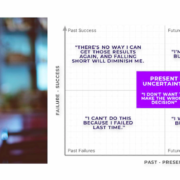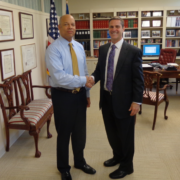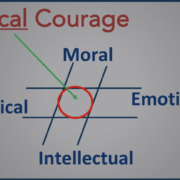5 tactics to face your fears and move forward
Fight, flight, or freeze.
Those responses to fear are hardwired into your amygdala.
Freeze is the most common for leaders, and it can be a silent killer for your business.
A simple framework to understand the fear and overcome it will help you seize opportunities in the 2021-renewal while others are standing still.
You’ve seen it happen. You don’t start the business; you don’t invest in success because of past experiences or self-limiting beliefs about the future.
Uncertainty heightens the fear of making the wrong decision.
You cover the paralysis by delaying or asking for more information and new options.
I’ve done it. I’ve seen it affect an American President, general officers, CEOs, and nonprofit boards and executive directors.
I learned the hard way that you have to get to the root cause of fear to address it.
Imagine a quad chart.
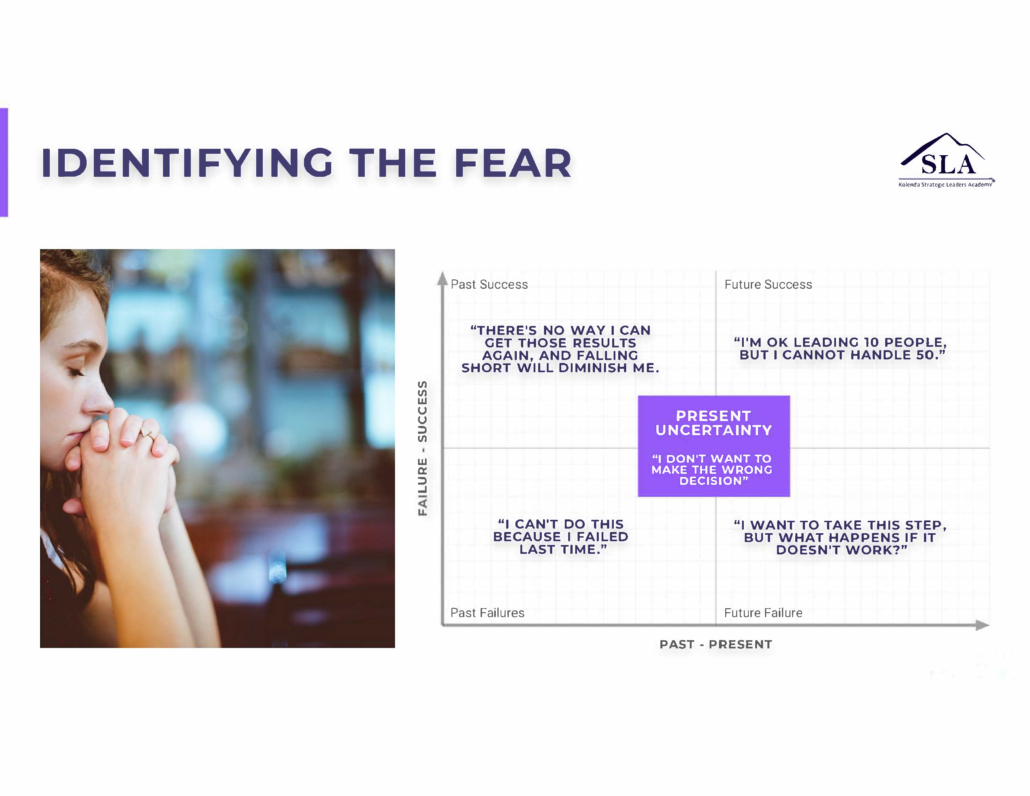
On the east-west axis, you have past and future.
The north-south axis is success and failure.
1. Fear of past failure occurs when you tried something before, and it did not work out. A business initiative failed, an innovation tanked, you got fired or chewed out. “I can’t do this because I failed last time.”
2. Fear of past success happens when you succeeded at something – perhaps against the odds, and you worry that you cannot pull it off again. “There’s no way I can get those results again, and falling short will diminish me.”
3. Fear of future failure is widespread. You worry that your business or initiative will fail, and you will suffer the consequences. “I want to take this step, but what happens if it doesn’t work?“
4. Fear of future success is more subtle. You believe that you will not be up to the challenge of managing growth, “I’m ok leading 10 people, but I cannot handle 50.”
5. Fear of the present uncertainty. Imagine a box in the center of the quad chart. You fear that you might make the wrong decision. “I don’t know if a recovery is coming in 2021, so I will wait and see before making a decision.”
These “freeze” responses keep you standing still.
When you are standing still, and others are moving forward, you are losing ground.
It’s like stuffing your money into a mattress.
You don’t lose the money, but inflation lowers its value, and you are missing opportunities for growth.
Once you understand the nature of the fear, you can take steps to address it.
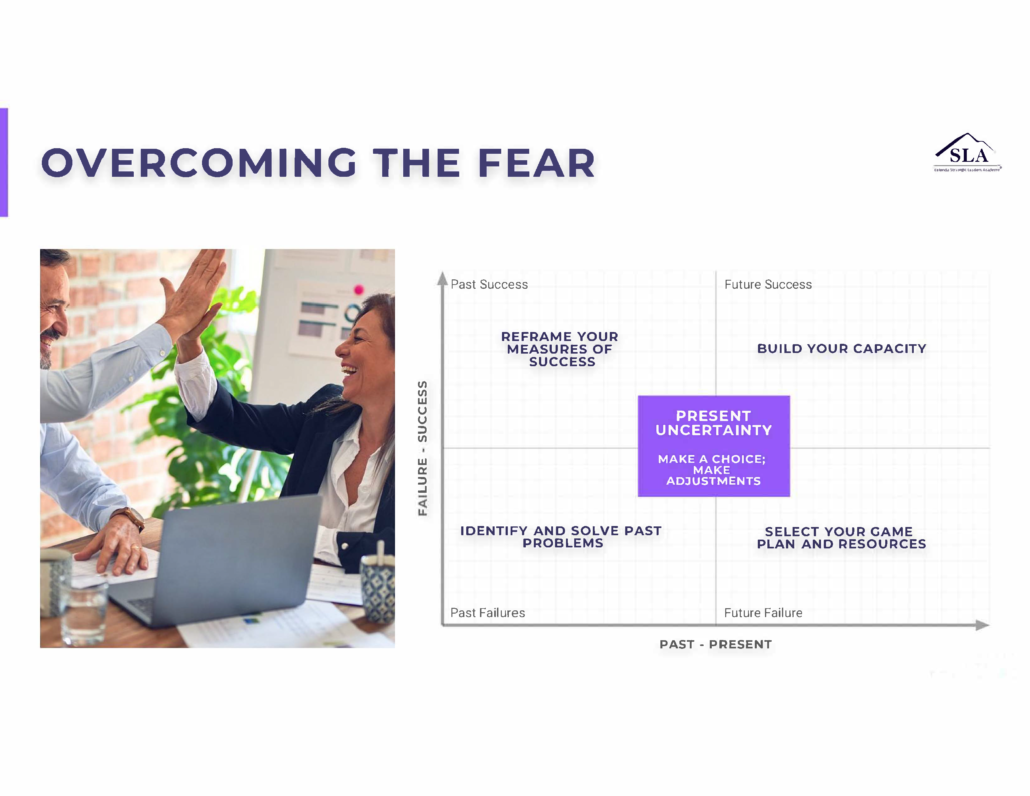
1. Fear of past failure. Identify the problems that led to the failure and put measures in place to prevent them from recurring.
2. Fear of past success. Reframe your measures of success. Focus more on developing others or creating different business lines, for instance, than meeting past targets.
3. Fear of future failure. Put together two or three viable options for reaching your goals and compare them. Create an action plan for the best option. Once you see how to achieve your goal, getting there becomes much easier!
4. Fear of future success. Determine what capacities you need to excel at the next level and develop them. Find the right support to help you succeed and avoid expensive mistakes along the way.
5. Fear of the present uncertainty. Review your options (to include doing nothing) and assess the risks and opportunities. Pick the best option and go with it. Your decision will probably work out. At worst, it is unlikely to be fatal, and you can make adjustments along the way.
What is your top takeaway from this article? Leave a comment below or email me directly: chris@strategicleadersacademy.com
P.S. If you’d like to discuss your 2021 goals, use this link to schedule the time that works best for you.
We will discuss your goals and obstacles during the call, and then I’ll offer you two or three action steps that get you moving forward. No sales, no B.S.
